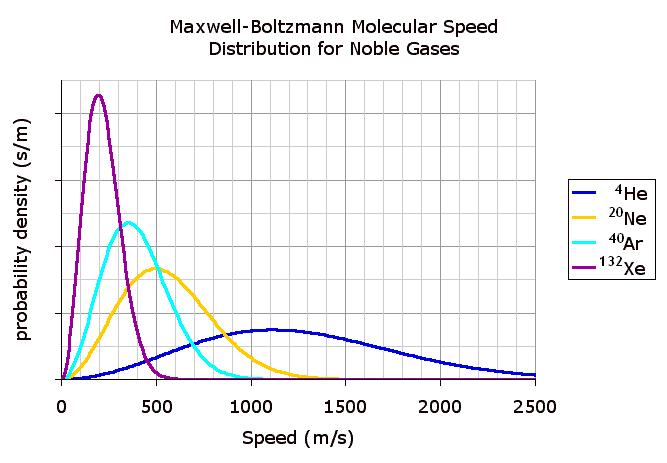Question
Question: The relation between RMS velocity, average velocity and most probable velocity is: A: RMS velocity...
The relation between RMS velocity, average velocity and most probable velocity is:
A: RMS velocity> average velocity > most probable velocity.
B: average velocity> RMS velocity> most probable velocity
C: RMS velocity= average velocity> most probable velocity
D: most probable velocity> average velocity> RMS velocity
Solution
The kinetic molecular theory states that the gas molecules are continuously moving in random motion. During their motion, different molecules have different velocities and the molecules keep on colliding with each other. Velocity is used to describe the movement of gas molecules.
Complete step by step answer:
We need to derive the relation between the three types of velocities, that are RMS velocity, average velocity and most probable velocity. Before deriving the relation, we must know a little detail about them.
Root mean square velocity:
The relation between temperature and kinetic energy is
Ek=23RT
And the relation of kinetic energy is
Ek=21mv2
On combining these two equations we get:
V2=m3RT
Or Vrms=M3RT
Thus we can say that the root means square velocity as square root of average square velocity.
In the equation, R is gas constant, T is temperature and M is molar mass in kg/mol of molecule.
Average velocity:
Average velocity is the rate of change of position of an object. It can also be explained as total displacement in total time.
Vavg=πM8RT
Most probable velocity:
The velocity which is possessed by the maximum fraction of gaseous molecules at a particular time is known as most probable velocity.
Its formula is:
Vmp=M2RT
If we compare these velocities, their ratio would be:
Vrms:Vavg:Vmp
M3RT:πm8RT:M2RT
R,T and M are present in all the three so they will cancel out.
3:π8:2
1.732: 1.596: 1.414
Therefore, the ratio of Vrms,Vavg,Vmp is 1.732: 1.596: 1.414.
It shows that Vrms is greatest and Vmp have least value.
So RMS velocity> average velocity > most probable velocity.
Hence, the correct option Is (A).
Note: The distribution of magnitude of velocity of gas is shown with the help of maxwell-boltzmann curve.

RMS velocity is used in place of average velocity because typical gas molecules move in all directions and have net zero velocity.
